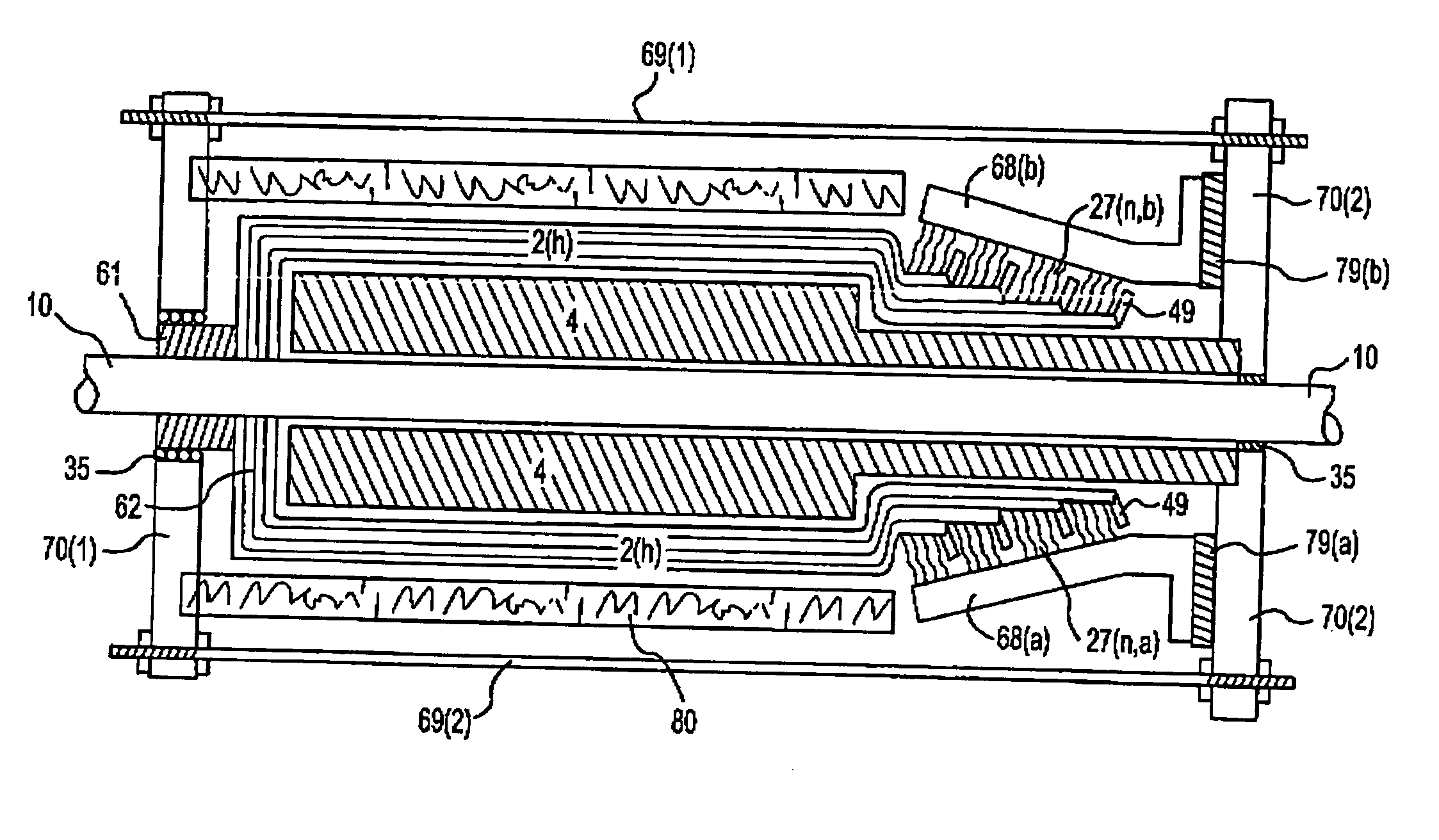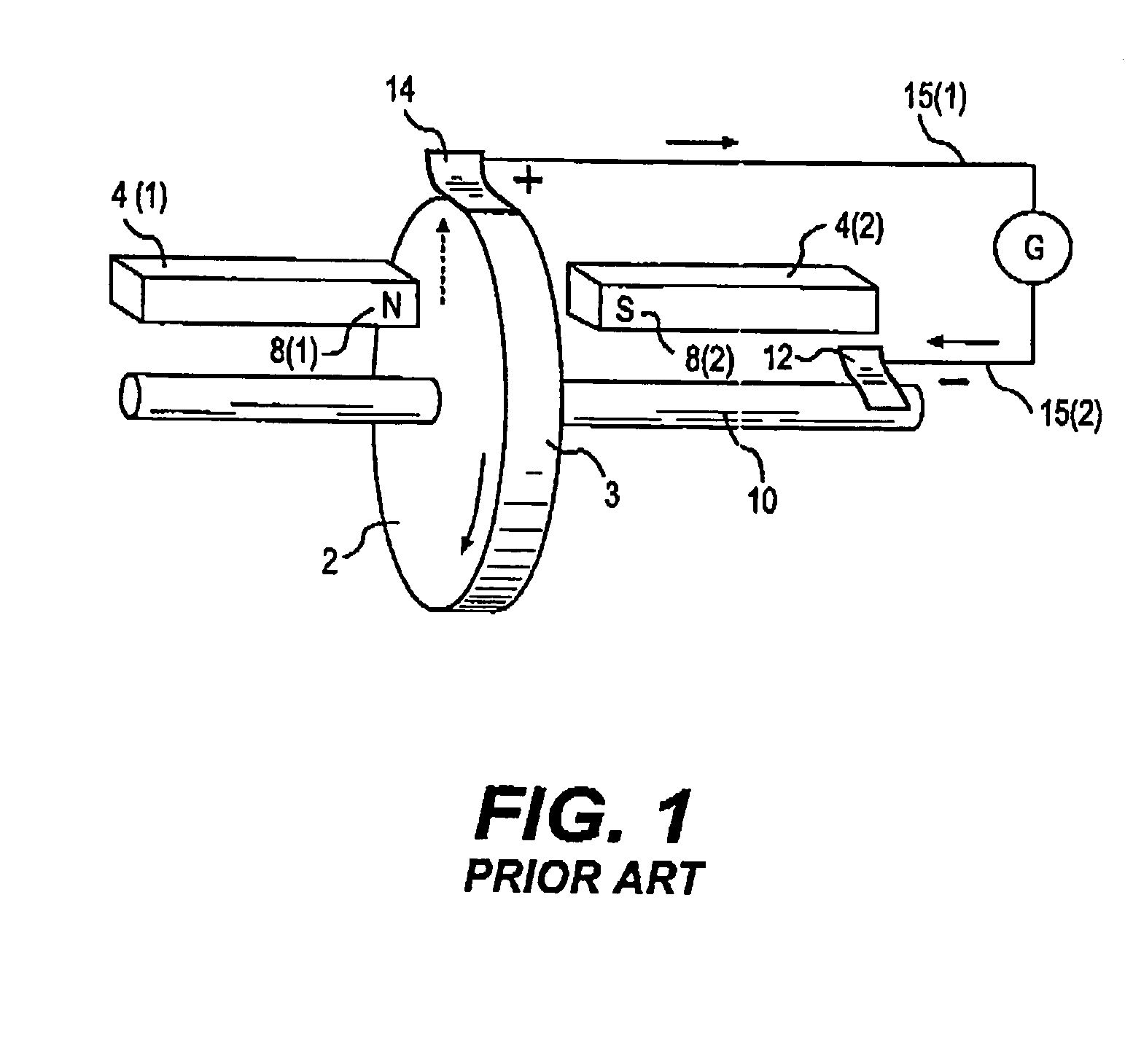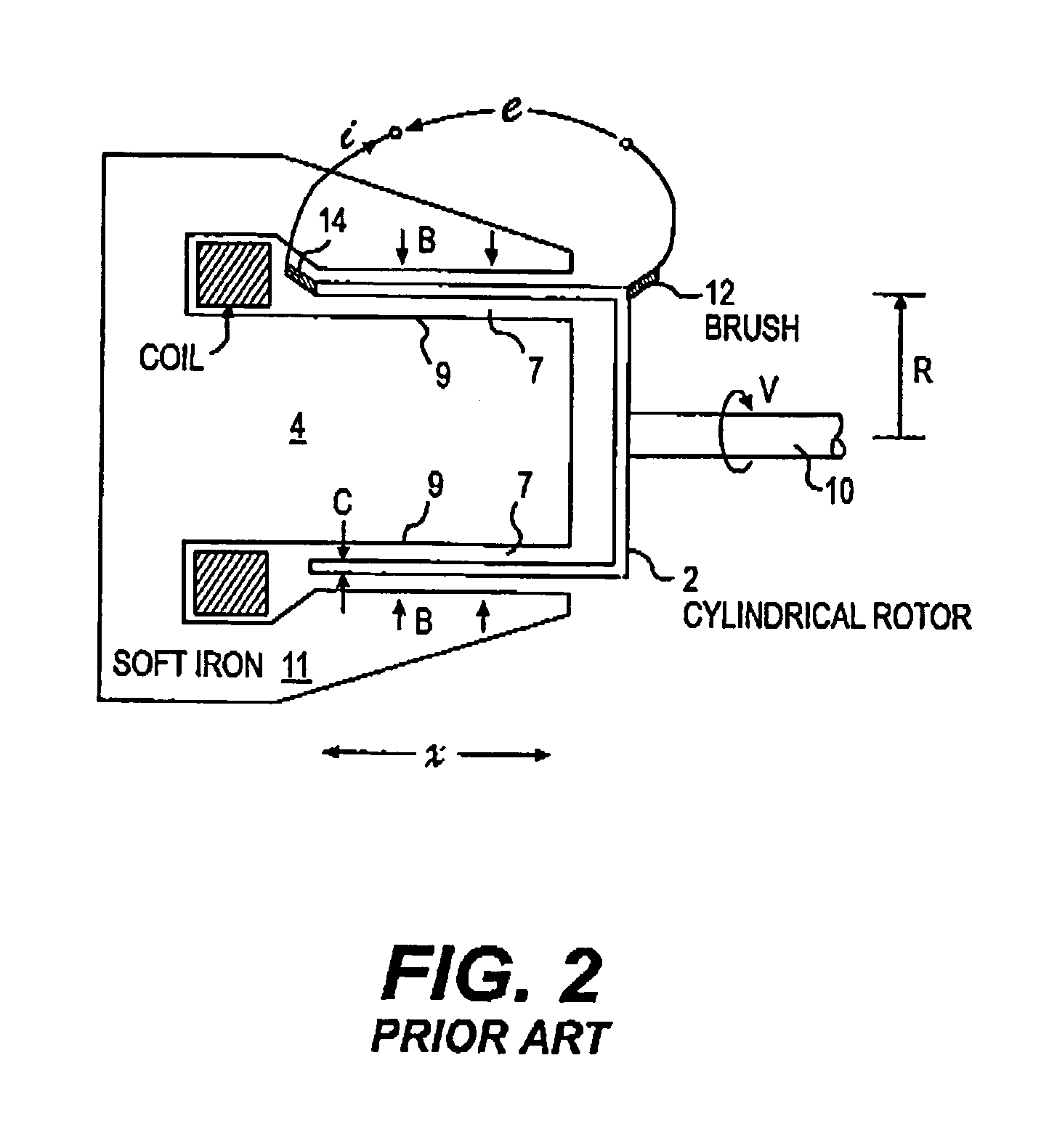Bipolar machine
a bipolar machine and joule heating technology, applied in the direction of dynamo-electric components, acyclic motors, cooling/ventilation arrangements, etc., can solve the problems of joule heating due to circulatory current, eddy current effect, unrecognized, etc., and homopolar machines may be only about 70% or less efficien
- Summary
- Abstract
- Description
- Claims
- Application Information
AI Technical Summary
Benefits of technology
Problems solved by technology
Method used
Image
Examples
Embodiment Construction
A. Regarding Current Channeling Means (FIGS. 1 to 6)
Referring now to the drawings, wherein like reference numerals designate identical or corresponding parts throughout the several views, the present invention will now be described.
FIG. 1 (prior art) is a reproduction of FIGS. 2-38of ref [1]. It is a perspective view that shows the basic structure of type I homopolar machines as invented 1831 by Michael Faraday. Herein FIG. 1 depicts the type I homopolar machine as a generator, but it can be also used as a motor. It includes an electrically conductive rotor 2 between magnetic poles 8(1) and 8(2) of two bar magnets 4(1) and 4(2) and is mechanically rotated in counter-clockwise direction by means of electrically conductive axle 10, to which rotor 2 is electrically connected. As a result of the motion of rotor 2 an EMF is induced in the area of rotor 2 that is penetrated by the magnetic flux, B, of magnets 4(1) and 4(2). By magnitude and direction that EMF is proportional to [v×B] wh...
PUM
 Login to View More
Login to View More Abstract
Description
Claims
Application Information
 Login to View More
Login to View More - R&D
- Intellectual Property
- Life Sciences
- Materials
- Tech Scout
- Unparalleled Data Quality
- Higher Quality Content
- 60% Fewer Hallucinations
Browse by: Latest US Patents, China's latest patents, Technical Efficacy Thesaurus, Application Domain, Technology Topic, Popular Technical Reports.
© 2025 PatSnap. All rights reserved.Legal|Privacy policy|Modern Slavery Act Transparency Statement|Sitemap|About US| Contact US: help@patsnap.com



